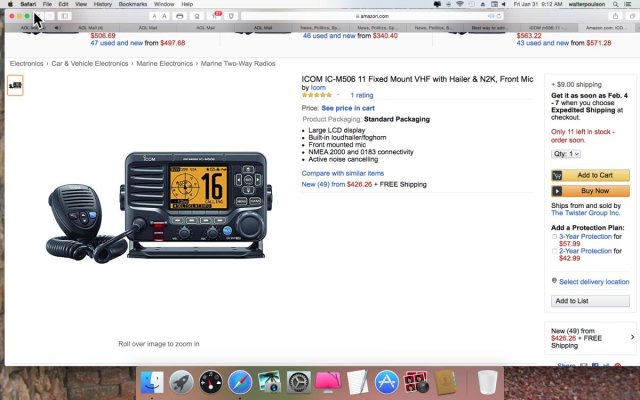Dougcole
Guru
Hello E-gurus.
I'm getting ready soon to add AIS to our boat. I'd like to do transponder, so I can send and receive.
My current set up is two 9" Garmin 942xs MFDs next to each other at the upper helm. With GMR 18 radar. I installed them last year. I have I run the boat exclusively from the upper helm, there is a small stand alone chart plotter at the lower helm, but I'm not considering sending the signal down there. There is a 3 year old Icom VHF up there as well, which I'm not opposed to changing out (I'd likely move it to the lower helm) as it doesn't play nice with my Garmins for DSC. I'd likely move the Icom to the lower helm if I needed to get a new VHF.
I also have an easily accessible antenna mount on the side of my FB which I am no longer using.
I'd like to do this without paying an arm and a leg, and I'd install it myself.
What would you guys do?
I'm getting ready soon to add AIS to our boat. I'd like to do transponder, so I can send and receive.
My current set up is two 9" Garmin 942xs MFDs next to each other at the upper helm. With GMR 18 radar. I installed them last year. I have I run the boat exclusively from the upper helm, there is a small stand alone chart plotter at the lower helm, but I'm not considering sending the signal down there. There is a 3 year old Icom VHF up there as well, which I'm not opposed to changing out (I'd likely move it to the lower helm) as it doesn't play nice with my Garmins for DSC. I'd likely move the Icom to the lower helm if I needed to get a new VHF.
I also have an easily accessible antenna mount on the side of my FB which I am no longer using.
I'd like to do this without paying an arm and a leg, and I'd install it myself.
What would you guys do?


